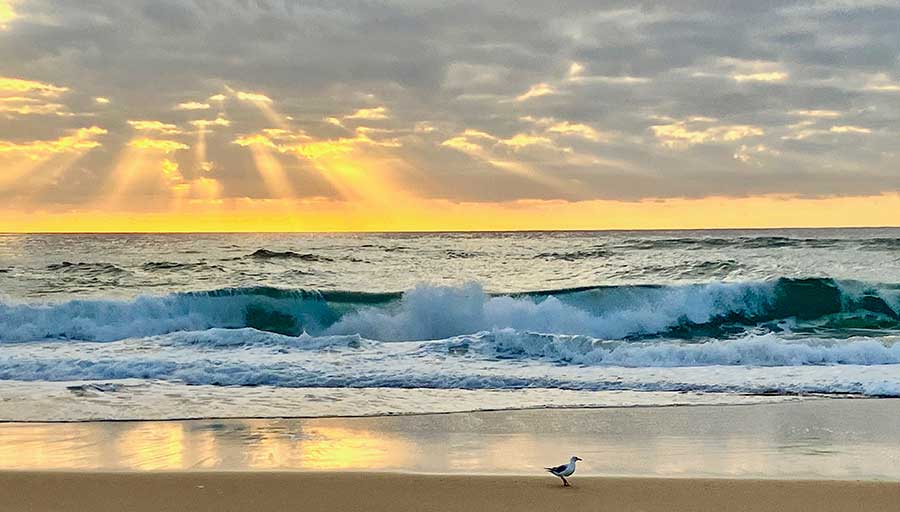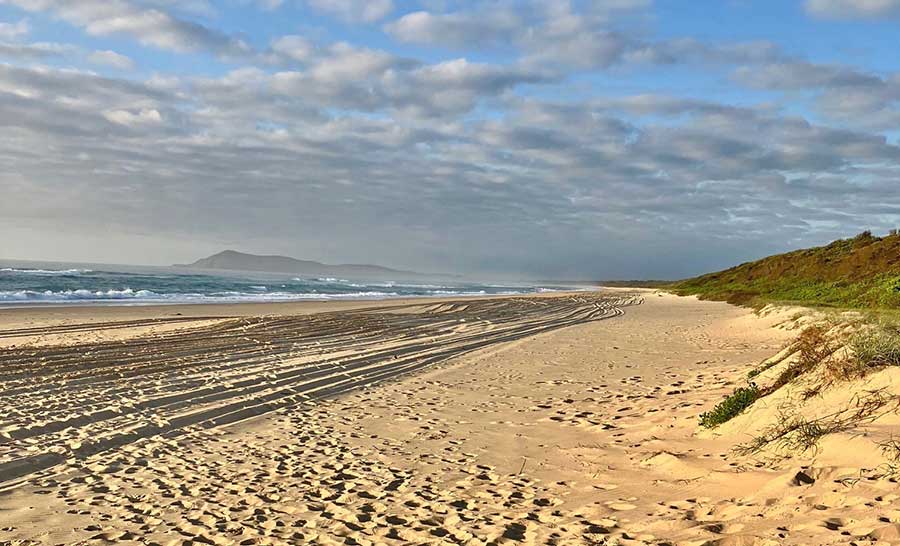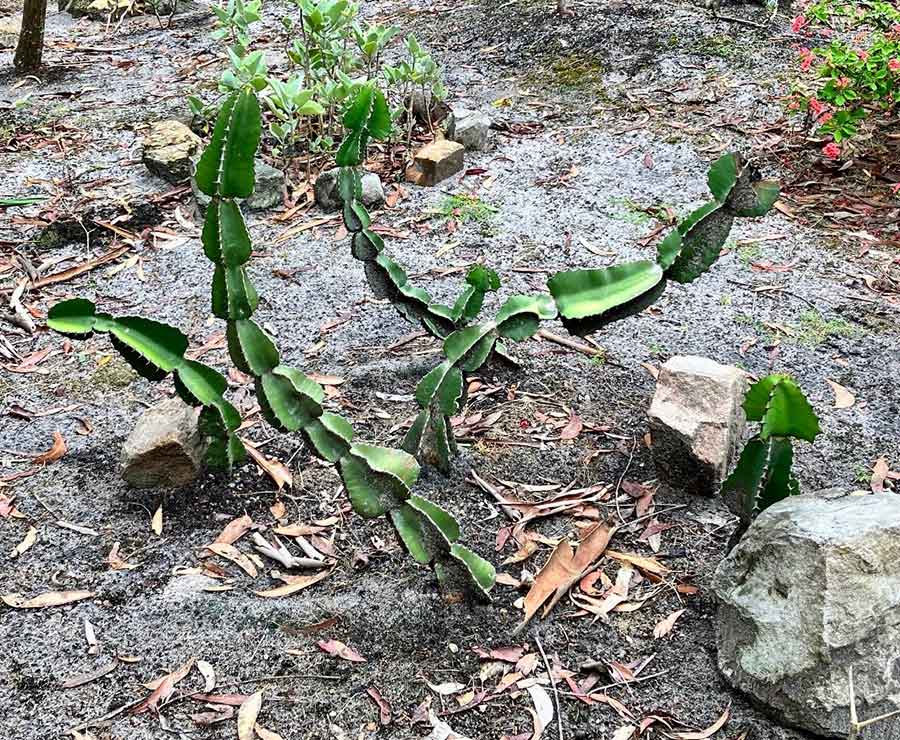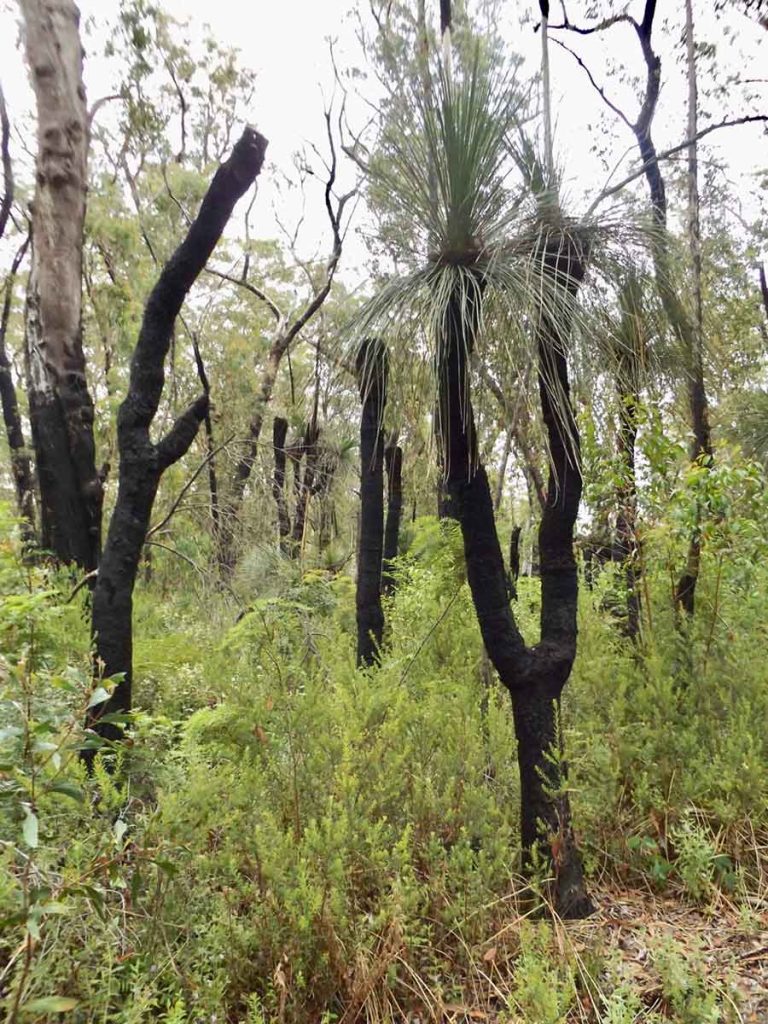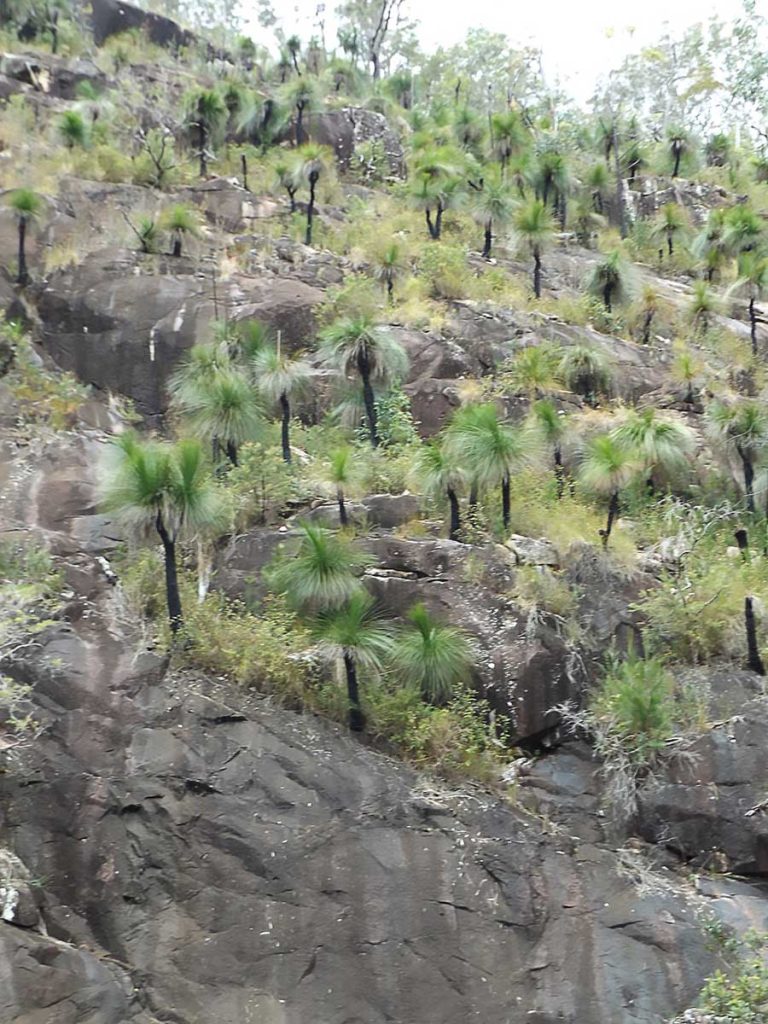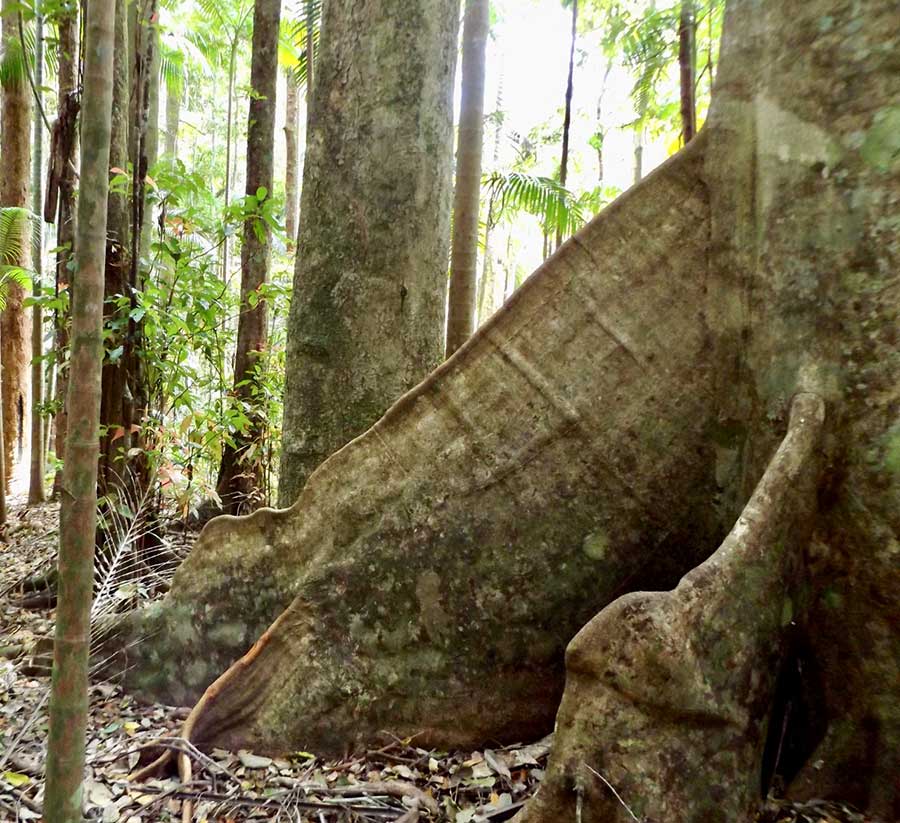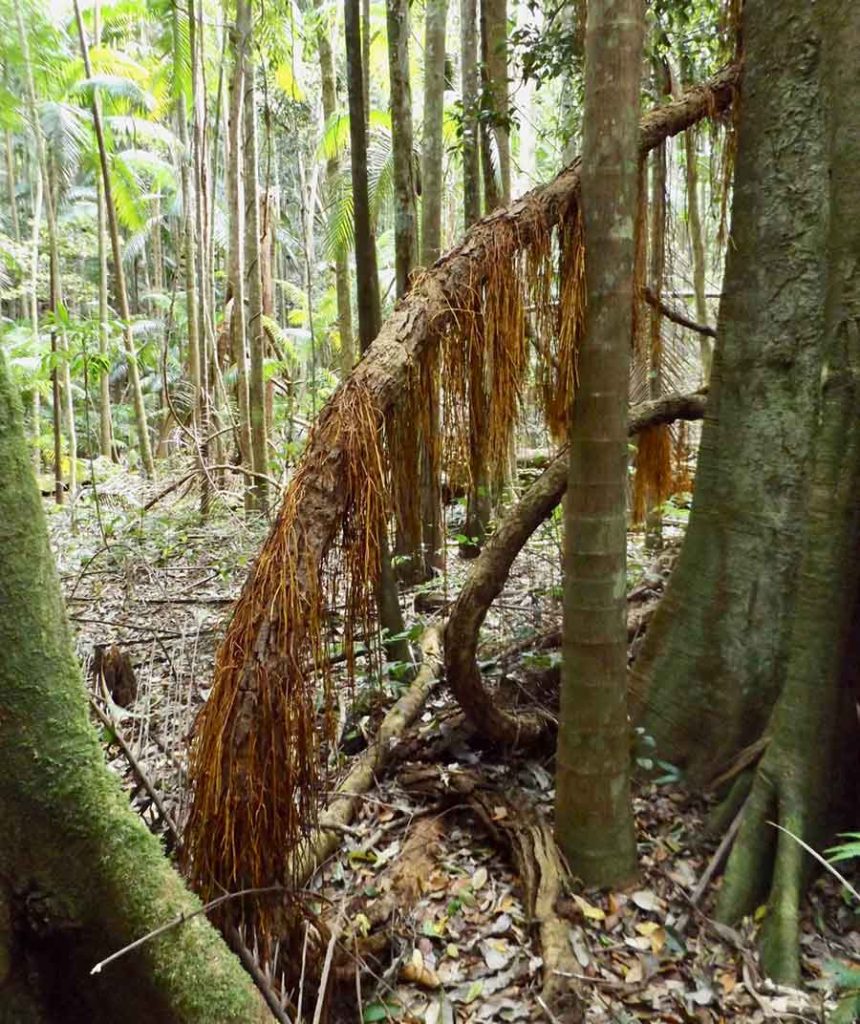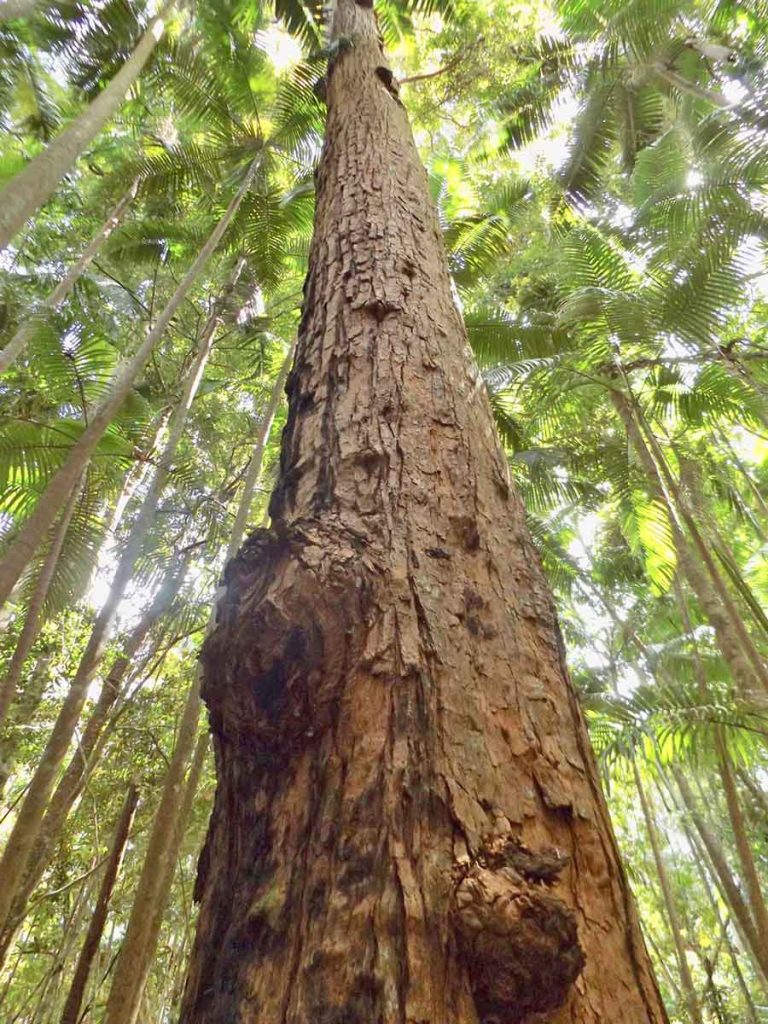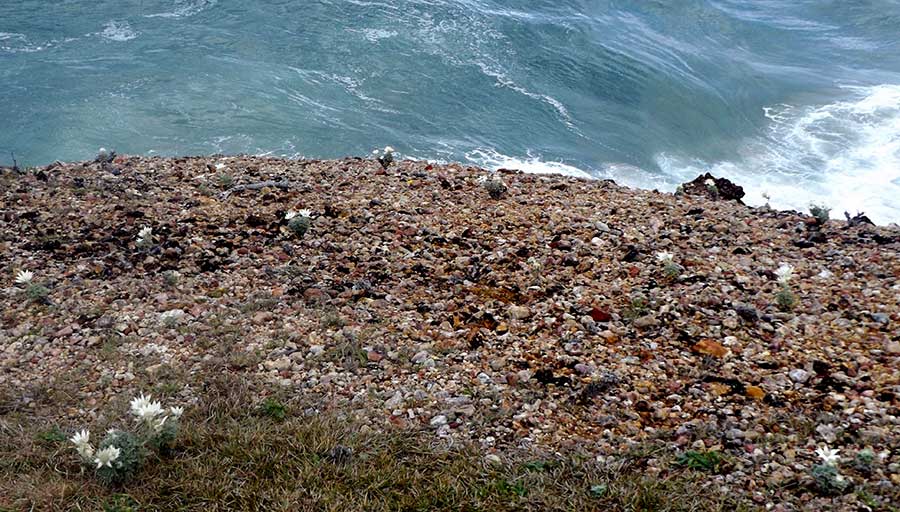
As the sun sets here, I am more attracted to the patterns and colours it adds to the river and the edging mangrove mudflats than to the sky itself. I have noticed that my eye keeps being drawn more to earth than sky, be it sunrise or sunset, beach or bush.

As usual, I find there’s a solitary bird poking about, to add interest to my photo.

I wasn’t sure what this one was until it turned sideways and showed off its S-bend neck ability: a White-faced Heron.

Of course there is always a stately solo Pelican, here cruising the wind-ruffled water amongst the oyster beds.
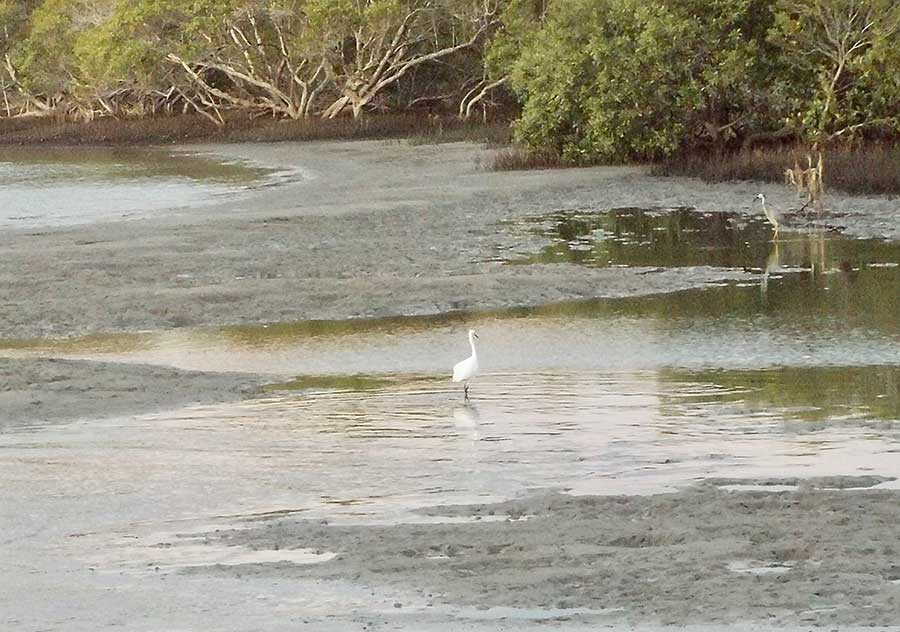
Taking my eyes off the gilded river, in the shallows by the mangroves I spy what looks like an Egret, snow-white and solitary, as expected. The now nearby Heron keeps its distance.

But I admit I am as taken by the sunset’s transforming impact on birdless mudflats, with the black nursery spikes of the mangroves punctuating the dimpled grey mud and accentuating the gold wash beyond, where oyster bed posts give both horizontal and vertical definition.
I’ve seen far more spectacular sunsets here, but every change in the light offers new interest to me, always worth closer inspection.








